Tip: Start typing in the input box for immediate search results.Can't find what you're looking for? Submit a support request here.
2D Load Methods
Planar (2D) Load Methods in StressCheck
In Planar (2D) elasticity, the following methods are available for assignment of loads to nodes, points, fastener elements, geometric curves, element edges, sheet bodies, and/or quadrilateral/triangular elements. The supported object types for each load method will be listed below each method description. For more details on load inputs, load assignments and checking static equilibrium of assigned loads, refer to Loads Overview.
Note: the types of loading available for axisymmetric (Axisym.) analysis are the same as for Planar elasticity. The only difference is that in axisymmetric analysis, the counterpart of a point load is a line load. Therefore, if a line load of magnitude w (force/length) needs to be specified acting at a position ro, then the entry in the Point Force field should be the product of w times ro.
Traction
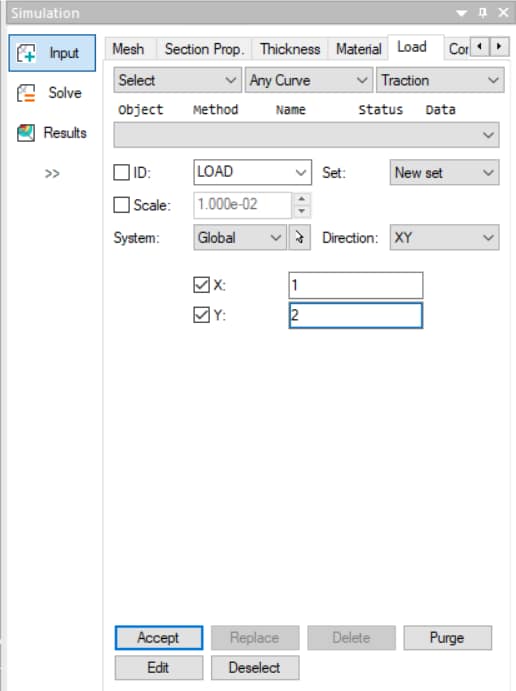
A distributed load (in force per unit area) is imposed on a curve or element edge. Traction is a vector quantity. Thus, two vector components must be given. These may be in the normal-tangent reference frame, in the global system, or an arbitrary local system.
Object Types:
- Any Curve
- Edge
- Edge Curve
Bearing
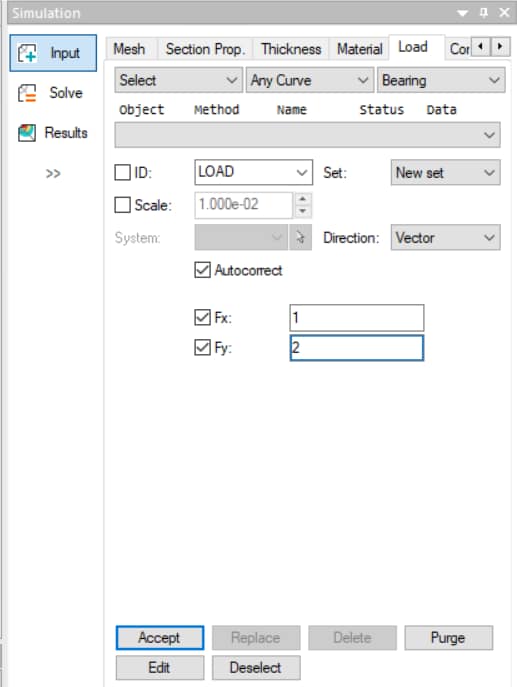
Sinusoidal bearing tractions (in units of force) may applied to a circular hole by specifying the magnitude and angular direction of the force, or the two force vector components (Fx, Fy). In the Planar reference, no coordinate system is required for bearing loads.
Object Types:
- Any Curve
- Edge
- Edge Curve
Spring Displacement (Spring Disp.)
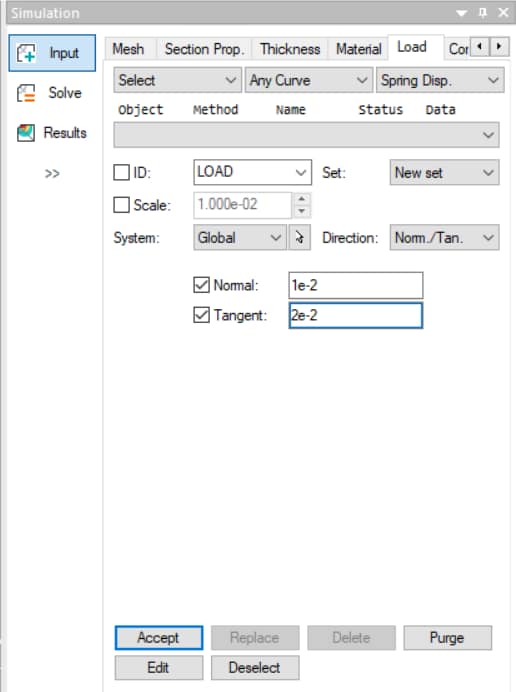
A traction load is applied through a displacement imposed on a distributed spring which has been specified on curve or element edge. Spring displacements may be applied in directional (XY) or normal-tangent (Norm./Tan.) reference frames, in the Global or a local system.
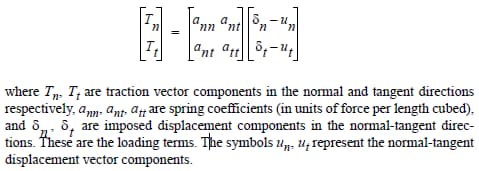
Specifically, the traction vector components in the normal-tangent reference frame, for example, are dependent on the imposed spring displacements:
Object Types:
- Any Curve
- Edge
- Edge Curve
Body Force
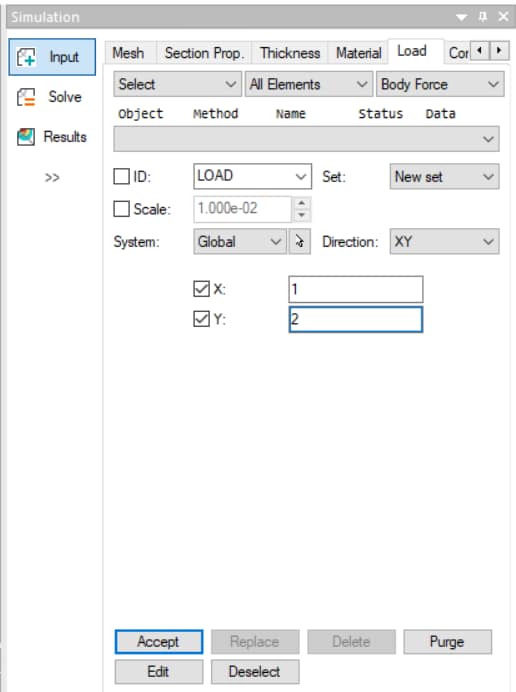
Body force loading means that the body is loaded by some distributed load (in force per unit volume), such as by gravity or inertia due to acceleration.
If the acceleration vector a = {ax, ay} and the mass density(ρ) are known then enter the products: X = axρ and Y = ayρ. Body forces can be applied to planar bodies, or quadrilateral, triangular and beam elements in the global or any local Cartesian coordinate system.
Object Types:
- All Elements
- Any Element
- Any Body
- Mesh Region
Thermal
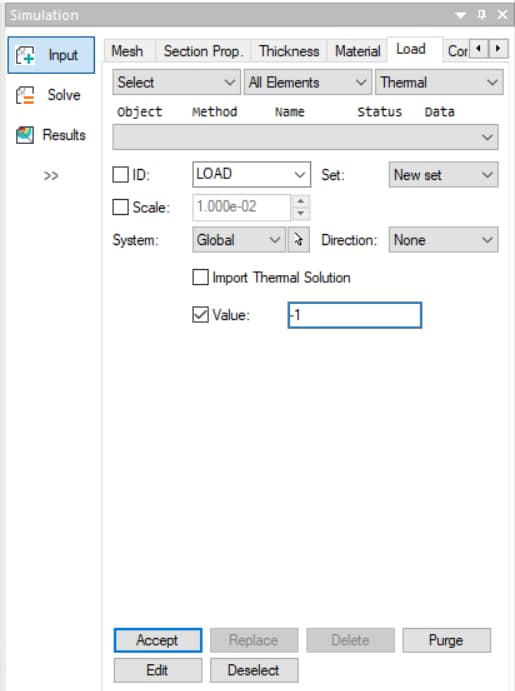
Thermal loading means that a temperature distribution (in degrees) will be specified on elements.
Object Types:
- All Elements
- Any Element
- Any Body
- Mesh Region
Point Force
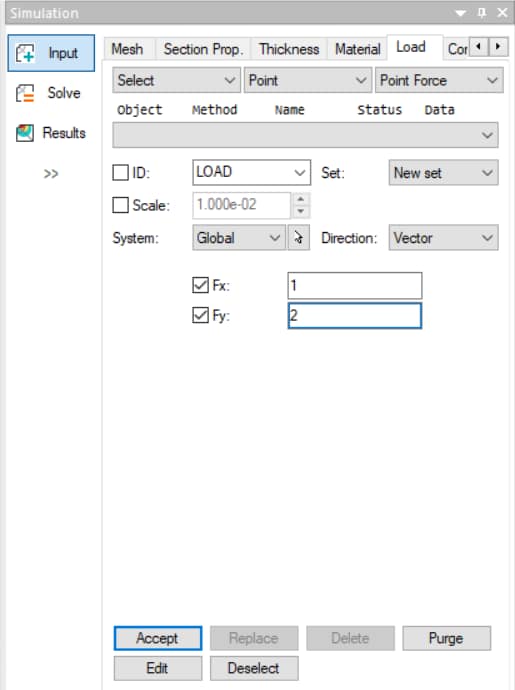
Point force means that a location on the elastic body is loaded by a concentrated force. Point forces may be applied in the global or any local Cartesian coordinate system.
Object Types:
- Point
- Node
Note: the use of point forces in 2D elasticity will result in stress singularities at/around the point location. Refer to StressCheck Tutorial: Detecting Stress Singularities for details.
Force Load
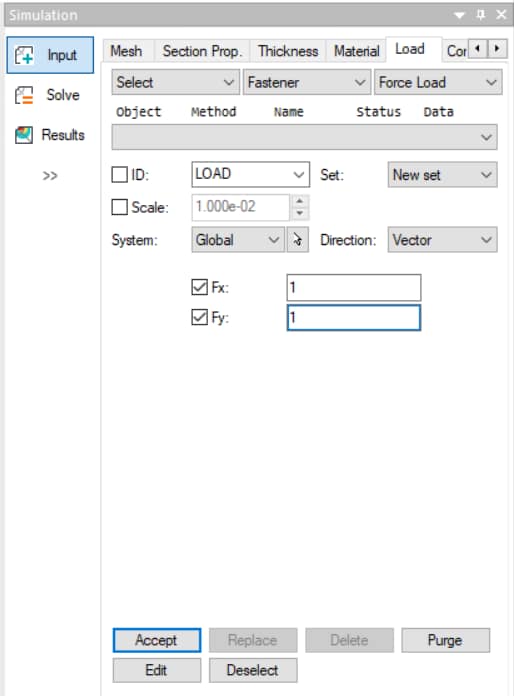
Force load means a concentrated force is applied to the core of a fastener element. Force loads may be applied in the global or any local Cartesian coordinate system.
Object Types:
- Fastener
Interference
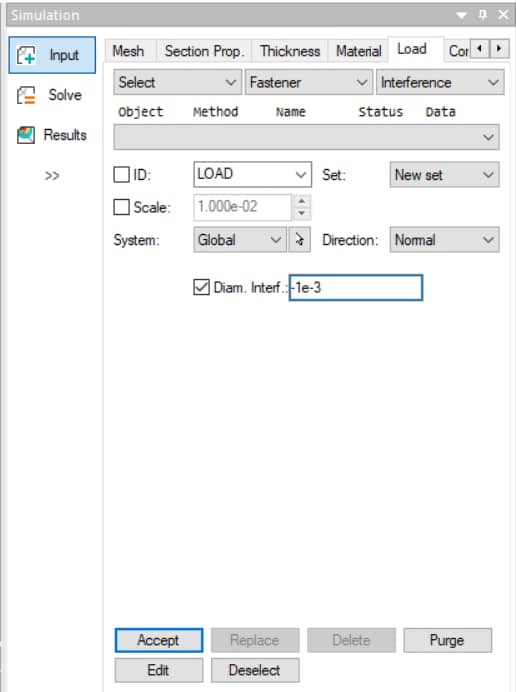
Magnitude of the diametral interference that can be specified to a fastener element. Note: a negative diametral interference input will be interpreted as a clearance fit.
Object Types:
- Fastener
 Serving the Numerical Simulation community since 1989
Serving the Numerical Simulation community since 1989 
